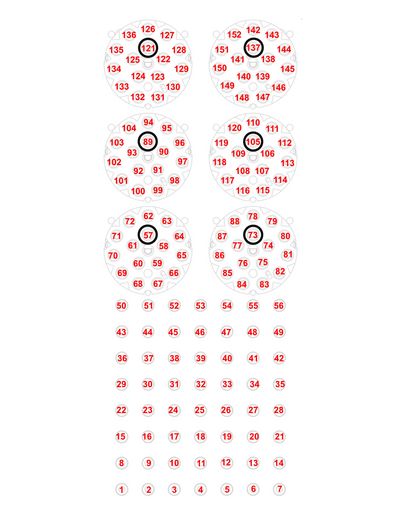Difference between revisions of "Sample Robot"
(Created page with "The 11-BM Diffractometer has an industrial Mitsubishi robot for automated sample changing with compatible sample environments. It is disabled for non-compatible setups. It ca...") |
|||
| Line 6: | Line 6: | ||
Diagrams showing the numbering are here: | Diagrams showing the numbering are here: | ||
[[Image:RobotSampleTray.png|frameless|400px|RobotSampleTray.png]] | |||
[mage:11-BM_Robot_Magazine_Diagram_2011.png here]. | [mage:11-BM_Robot_Magazine_Diagram_2011.png here]. | ||
Revision as of 22:52, 14 September 2011
The 11-BM Diffractometer has an industrial Mitsubishi robot for automated sample changing with compatible sample environments. It is disabled for non-compatible setups.
It can access 56 samples mounted on individual posts plus 6 magazines of 16 samples each (152 total samples).
Sample Position Number Diagrams
Diagrams showing the numbering are here:
[mage:11-BM_Robot_Magazine_Diagram_2011.png here].
Robot Operator Functions
Special training is required to operate the robot from inside the 11-BM-B hutch. See the list of approved robot operators for name of individuals with this training. Also see robot operator information for documentation on activities that to be performed only with appropriate training.
Hardware Documentation
A set of hard-copy Mitsubishi manuals were included with the robot, but the translations in the newest set of manuals tends to be more clear. The manuals can be found here. Of these, the most important are:
- RV-1A/RV-2AJ Robot Arm Setup and Maintenance manual, BFP-A8052: This manual covers the basic installation, jog operation, and maintenance for the RV-1A robot arm.
- CR1 Controller manual, BFP-A8054: This manual covers the basic installation, setup, and maintenance of the robot controller, including descriptions of the Teaching Pendant buttons.
- RV-1A/RV-2AJ Series Standard Specifications Manual, BFP-A8050: This manual covers many details of the controller and robot arm. Many important items are found in this manual, such as the location of fuses, range of motion diagram, and load capacity specifications. This is a good manual to peruse.
Safety Interlock
Humans are prevented from injury through contact by the robot when moving via a combination of an engineered control (the Robot-Human Safety System, RHSS) and an associated procedural control policy. Both are described in a memo on robot safety.
Servicing
The robot needs periodic servicing for lubrication and for replacement of backup batteries. A schedule for this has not been established.
